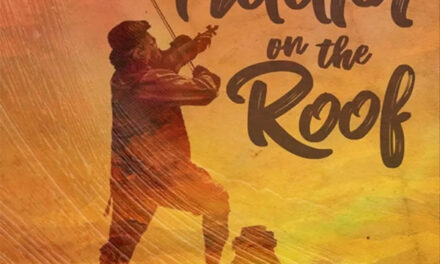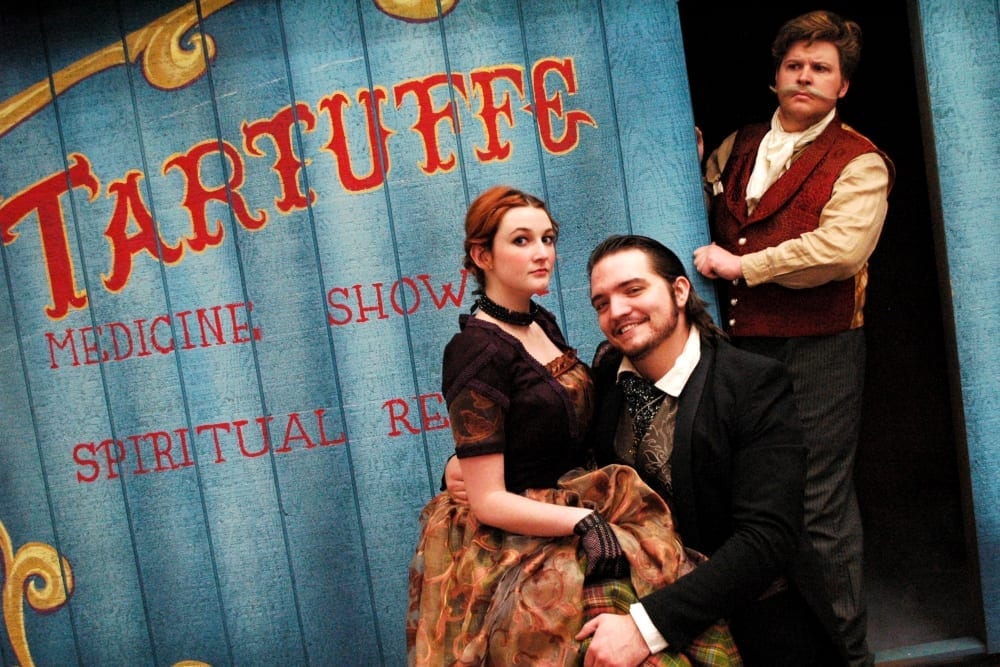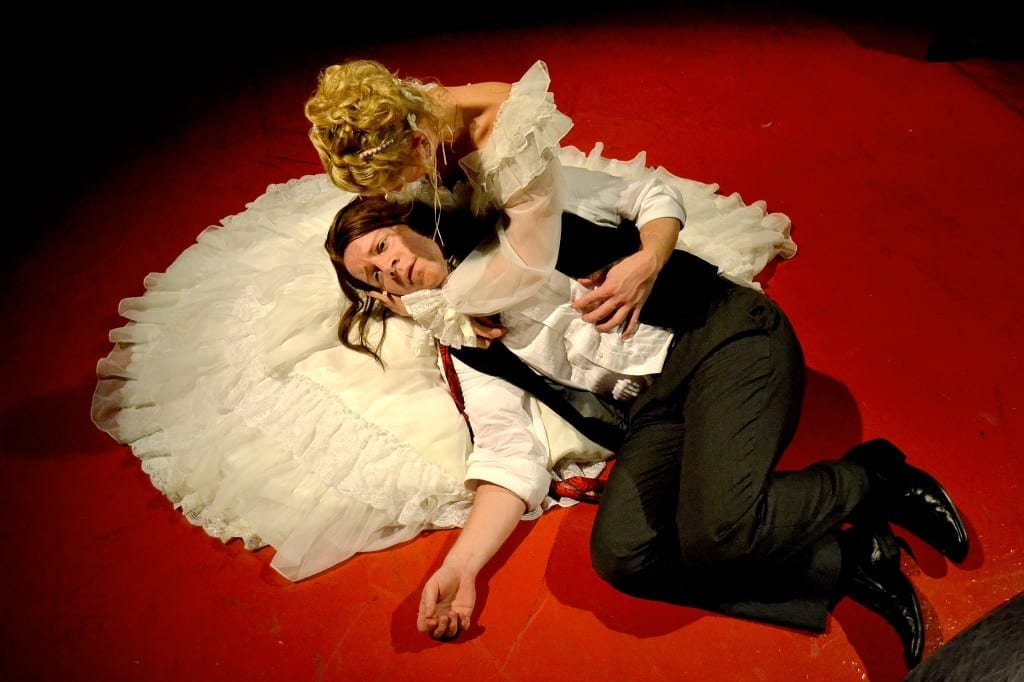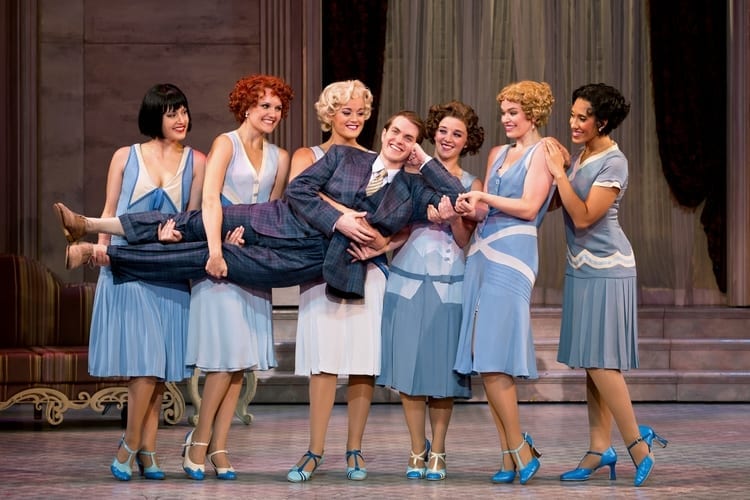MIDVALE — 5 Carols for Christmas is a holiday musical by local playwright Jim Christian about five friends with the same name—well, almost. There is Carol Ann (or “Carol Prime” as I call her), Queryl, Karil, Carroll, and Car’l. Thus, the show is entirely within the Utah tradition of giving crazy names to children.
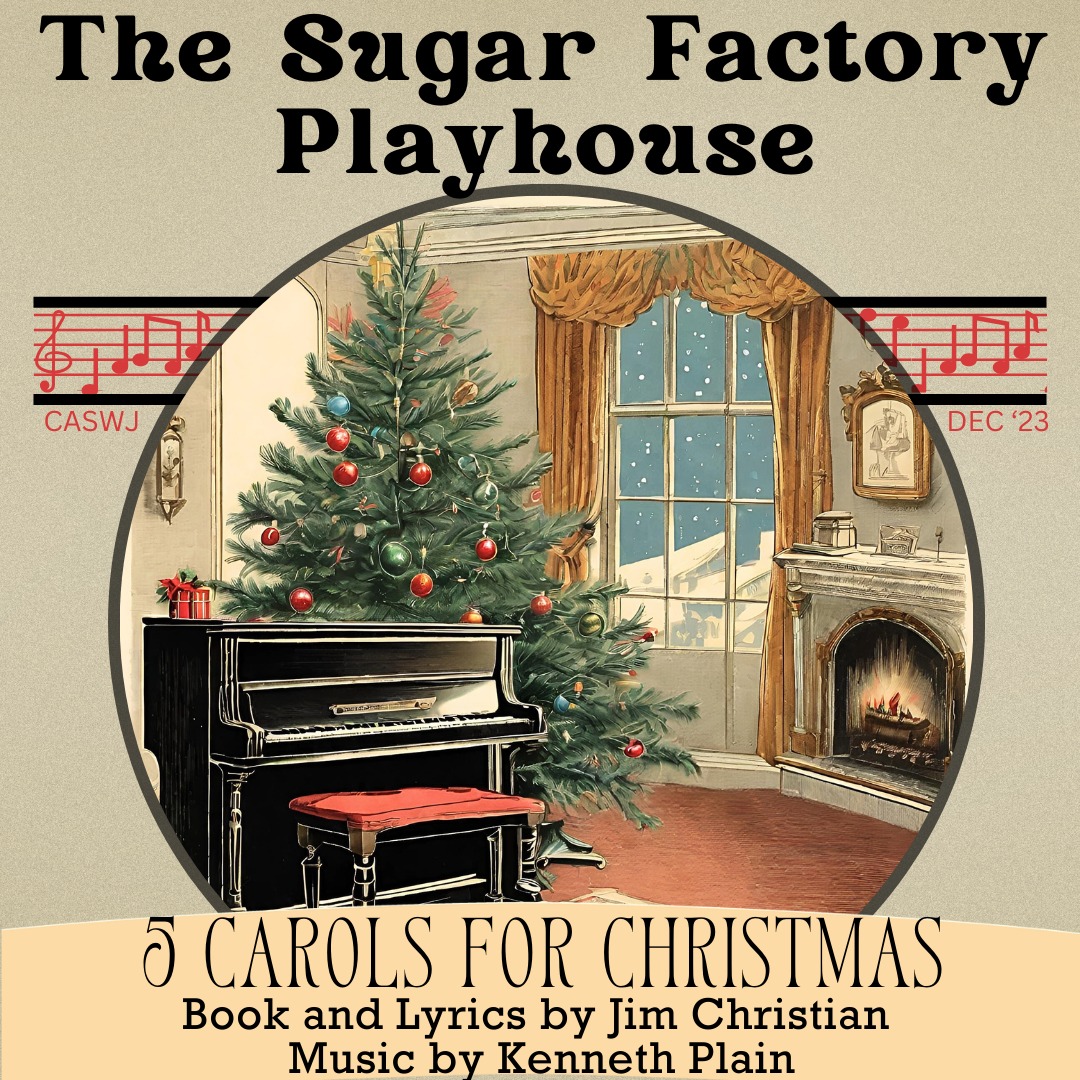
Show closes December 16, 2023.
Carol Ann is a stereotypical 1950s housewife whose life seems to revolve around the annual high school Christmas musical. While much of the show was a musical revue itself, there was a thin plot of the women’s preparations for the musical, and its disastrous performance caused by a power outage.
The Sugar Factory Playhouse is the latest Utah theater to mount the show, which features book and lyrics by Christian and music by Kenneth Plain. It is a cute, short musical that both revels in and lightly satirizes the ideals of American homemakers circa 1954. The show was presented in the Midvale Performing Arts Center, a cool space with nice seats. Although I lived just a few blocks away, this was my first time actually entering the building.
While the main conceit of the play was that everyone is named Carol, fortunately the characters had nicknames to help keep them straight. There was a double-divorcee “Q” played by Ann Sharp (who portrayed Carol Ann in Sugar Factory’s 2017 production), who had the unfortunate luck of being married to not one, but two philanderers. Her comment about the benefits of double alimony prompted some of the night’s biggest laughs.
Then there was Aubrey Sharp as “Noyesy,” a tart, primp woman in beige plaid who was a bit snobbish but also more grounded and realistic than others. Emily Jameson’s “Ling Ling” was a slightly spacey woman whose interracial marriage with a Chinese man was misunderstood by others. Her innocence and purity made her my favorite Carol of the bunch. The cast was rounded out by Jeannine Kane as “Kitty” and Todd Davies as Cousin Ray. The cousin role was curious, because Ray was not asked to do much besides sit behind a piano (the music was a canned track). However, Davies performed the mute role well, even though the role’s largest lift was being horrified at what he thought was a particularly awful song. The cast admirably hit their physical and verbal marks, and the dialogue and repartee among them was strong. It was clear each was giving it their all.
In addition to familiar carols like “Toyland” and “O Christmas Tree,” the show included a half-dozen original songs, including the clever “The Gal Can’t Bake” and the Act II showstopper “Dress Up Your Shelter” about the importance of festively decorating your Cold War-era fallout shelter. The nuclear age number was the clear audience favorite and featured gas masks, fears about “Commies,” and prepping for the big one. It reminded me of Weird Al’s 1986 song “Christmas at Ground Zero.”
Musically, many of the cast had strong voices and did a good job of blending during the many five-part harmonies. There were some flat notes to be heard, but I was particularly impressed with Sharp’s ability to hit a tough high note on pitch. Kane started with gusto and enthusiasm, though she did seem to struggle with some solo parts, which may be improved with breath support training.
Direction by Doug Bishop and choreography by Kimberly Bradstreet were simple and effective. The blocking of “O Christmas Tree” was particularly strong, with the stage balanced with two Carols around the tree, and the other three around the piano. Dance-wise, inclusion of some 1960s moves like “The Swim” did feel out of place, however.
Costumes by Karen Chatterton featured some lovely vintage wear. Carol Ann’s black-and-white polka dot dress with red belt was adorable, and Q’s floral dress was lovely as well. However, I do not understand why Carol Ann was horrified about the Santa Claus costume; it seemed equally frumpy as the Kris Kindle one she admired (beard aside).
The set design by Michelle Groves and Doug Bishop featured a living room set with mid-century style furniture surrounded by three walls under a proscenium arch. Typical Christmas decorations, like a red cookie tin and shelving full of festive knick-knacks, filled the stage, which was completed by the upright piano manned by Cousin Ray. Props were good, although the candy castle looked more like it was damaged in transit than half-eaten.
Sound and lighting design by Robbie Dalley were strong, and the microphones and mix performed admirably. I particularly appreciated the warm, even lighting on “Q” during her solo number, which showcased her without the typical harsh glare of a spotlight.
In the lead role of Carol Ann, Jenna Lynn looked and acted like a postcard 50s homemaker, with perfectly set hair, make-up and outfit. Lynn was great in the role and really looked the part; however, there seemed to be a disconnect between the production’s portrayal of the character and the way it was written. Why would her friends demand she pick up “Vogue” for fashion tips when her dress and hair were among the best of the group? Also, if Carol Ann was apparently fine with being a subpar homemaker, why was she the one losing her cool when the big holiday performance fell apart?
It was sometimes hard to believe that five women could be friends at all—especially with Carol Ann. They hate her cooking. They hate playing the bells with her. They hate her “Sissies” song. They make fun of the names of Ling’s kids. And they constantly make faces behind each others’ backs. As comedian Joey Adams said, “With friends like these, who needs enemies?”
This production may benefit from a stronger differentiation between satirical and earnest content. For example, the characters’ yearning for native Hawaiians to be more like white Americans was clearly satirical; however, it may be more palatable if it was clear that the production was more aware of its outrageously offensive nature. Other dated material, though, like the women making fun of Chinese names for humorous effect, felt baked into the script, leaving it up to the audience how to respond. Given the passage of time and changing sensitivities about race, colonialism, and gender roles, the playwright may consider updating “5 Carols for Christmas” to add a little more subversion of 1950s cultural norms and make the musical more palatable to modern audiences.
Overall, The Sugar Factory Playhouse’s 5 Carols for Christmas is a sweet production of classic tunes and some clever original pieces. It is a simple show that meets its goal of adding holiday cheer to community theater.

These reviews are made possible by a grant from the Salt Lake County Zoo, Arts, and Parks program.


